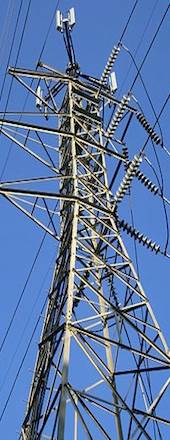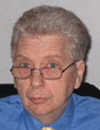Advanced and Intelligent Back-Up Power Systems
Learning Objectives:
- Identify ATS types and ratings.
- Describe how to choose ATS transition categories: open, delayed/programmed, and closed.
- Explain how to match the ATS transition type to the load characteristics.
- Examine the integration of ATS control and communications functions with building management systems.
Credits:

Our society has become highly dependent on electrical power. Directly or indirectly this impacts the average person, as well as businesses and government agencies, at virtually every level.
This has caused a wide variety of organizations to consider adding or upgrading back-up power to their existing facilities or include them as necessities for new buildings. While the basic concept and need of the emergency generator has not changed, the demand for greater integration and communication with more advanced sophisticated building and energy management systems has increased.
Automatic transfer switches (ATS) have become a basic element of the back-up generator power chain for many decades and have evolved to now offer far more options than the simple electromechanical legacy ATS. Increased 24/7 availability requirements for mission critical back-up power systems for data centers, telecommunication systems, emergency services, healthcare and sensitive manufacturing processes has enhanced of the role of the ATS.
Moreover, in the age of localized and distributed power generation, the ATS may need to interact with a micro-grid or the smart grid in the not too distant future. As a result, ATS controllers have become more intelligent and offer different levels of functionality and intelligence to meet these challenges.
We will examine the applications of enhanced ATS features such as energy monitoring, surge suppression and ground fault detection. These features have typically been addressed with other electrical equipment but can now be integrated within the ATS, saving space, as well as equipment and installation costs.

|
Julius Neudorfer is the CTO and founder of North American Access Technologies, Inc. (NAAT). Based in Westchester, NY, NAAT’s clients include Fortune 500 firms and government agencies. NAAT has been designing and implementing data center infrastructure and related technology projects for the last 25 years. Julius is a member of AFCOM, ASHRAE, BICSI, IEEE and The Green Grid. He is a Master Instructor for the DC-Professional Development program, as well as for the U.S. Department of Energy “Data Center Energy Practitioner” “DCEP” program. He developed and holds a U.S. patent for a high efficiency cooling system for rack mounted computer equipment. He writes the “Hot Aisle Insight” column at Mission Critical, and has also written numerous articles and whitepapers for various IT and data center publications and has presented seminars and webinars on data center power, cooling and energy efficiency. |
|
|
A global force in power solutions since 1920, Kohler is committed to reliable, intelligent products, purposeful engineering and responsive after-sale support. The company manufactures complete power systems, including generators (portable, residential, industrial, and marine), automatic transfer switches, switchgear, monitoring controls, and accessories for emergency, prime power and energy-management applications worldwide. For more details, please visit www.KohlerPower.com. |






